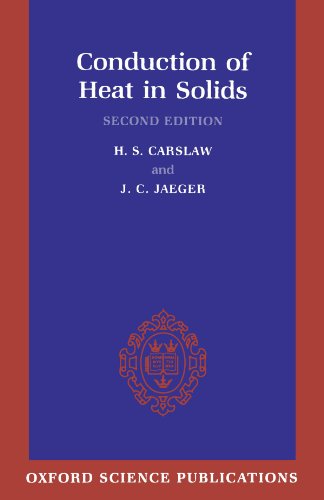Conduction of Heat in Solids book
Par abril cristi le lundi, janvier 16 2017, 23:10 - Lien permanent
Conduction of Heat in Solids by H. S. Carslaw, J. C. Jaeger


Conduction of Heat in Solids ebook download
Conduction of Heat in Solids H. S. Carslaw, J. C. Jaeger ebook
Publisher: Oxford University Press, USA
ISBN: 0198533683, 9780198533689
Format: djvu
Page: 517
Carslaw, Introduction to the Mathematical Theory of the Conduction of Heat in Solids; P. ΔT = temperature difference between two systems. Allen, Astrophysical Quantities; H. Simply put, when the heat is committed in one area next to the solid by molecular collisions. An example of conduction through contact between two solids is a cooking pot on the solid surface of a hot stove. The book says at the introduction: "When different parts of a body are at different temperatures heat flows from the hotter parts to the cooler. Of Semiconductor Devices; Charles Kittel, Introduction to Solid State Physics; C. It is also a term that describes processes affecting the atmosphere, waters, and solid earth. Convection is the name for a means of heat transfer, as distinguished from conduction and radiation. There are three main forms of heat transfer which are commonly referred to within the process engineering industry: Conduction. I consulted for my work the book "heat conduction in solids" by H.S. Heat obtained by heat conduction, depends on properties of the material through which heat transfer. Introduction to the mathematical theory of the conduction of heat in solids. The greatest flow of heat possible between materials is where there is a direct conduction between solids. Conduction is the phenomenon of transfer of heat through one part of the body to another, from particle to particle in the direction of fall of temperature without any actual movement of the particles. Conduction: Heat is disorderly kinetic energy of molecules and/or vibration of molecules depending on if the matter is solid liquid or gas.